Ferrari's ultimate quintet of hypercars represent the pinnacle of what the prancing horse had to offer during any given era. Ranging from the eighties right the way through to the twenty-tens, the big five have been unstoppable in their quest for winning the hearts of automotive enthusiasts the world over.
The 288 GTO, the F40, the F50, the Enzo and LaFerrari have all pushed the boundaries of how fast a Ferrari can accelerate or how well it handles, but how well do each of these mechanical masterpieces perform when it comes to the buying, selling and turning a profit?
The market
In short, they all produce enviable investment figures and point towards a great potential for growth in the future, the exception to that rule is LaFerrari, which has seen a more subdued level of growth than its contemporaries. That being said, we wanted to dig a little deeper and see how the big five stack up against one another when considering them as investment pieces and possible ROI.
The 288 GTO
The first of the big five to be created, the 288 GTO is just one year shy of its 40th anniversary, which is a good indicator of why there has been such a sharp upturn in values over the past few years. Although consistently increasing values are nothing new for the 288, it's been the case for a decade.
A buy-in price of £824,605 in May of 2013 and a selling price of £3,260,071 presents an enviable ROI of 295 per cent over ten years, averaging out to 29.5 per cent each year. Of course, that is without factoring in mileage. If we take a comparable pair such as a car sold in London with 22,700km on the odometer which sold for £1,883,333 as the buy price then sold a similar mileage 15,000km example at Amelia Island for £3,643,768, then you can still achieve a hefty 93 per cent return over five years, which equates to 18.6 per cent each year.
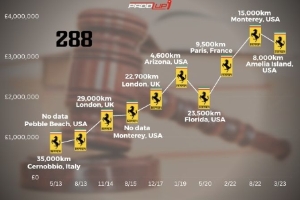
The F40
Like the 288 GTO before it, the F40 has a significant birthday looming on the horizon. The 40th anniversary of a car built to commemorate the 40th anniversary of Ferrari itself all but guarantees the F40 will remain on the steep upward trajectory that it has been on for over a decade.
An early buy-in in March of 2013 for £480,065 and selling at its current peak price of £2,218,065 presents a massive 362 per cent return - a worthy addition to any portfolio considering a 36 per cent annual return.
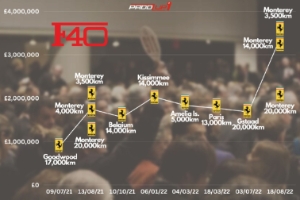
The F50
A worthy successor to its older sibling, the F50 was the second-rarest in terms of numbers produced (behind the 288 GTO) and that is immediately evident in the skyrocketing values of late. Arguably, the F50 has experienced the sharpest rise seen among the big five and, for a car that was often overlooked in favour of the F40, it has enjoyed something of a resurgence.
Once again, if we take a hypothetical lowest entry figure (£739,295 in May 2014) and then cash out at a peak of £4,397,901, the return generated is an astronomical 494 per cent. Even when the four million pound example's meagre mileage is matched, a revised entry price of £859,251 still generates a 411 per cent ROI.
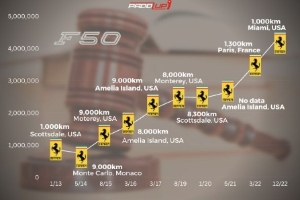
The Enzo
There was always a certain expectation around a car named after Ferrari's deified flounder. The Enzo delivered on that expectation and then some, both in terms of on-road performance and that it was an instant hit in the car community. Unsurprisingly then, its value has done nothing but soar over the past decade.
Other than one particularly high-profile sale of an Enzo previously owned by His Holiness Pope John Paul II - that eventually sold for £3.8 million - the model has seen a steady rise through the years. If you were to purchase one in May of 2013 for a price of £915,695 and then sell at the peak (for non-Pope-owned examples) of 3,567,540 makes for a return of 289 per cent or 28.9 per cent per year, almost directly comparable with the 288 GTO.
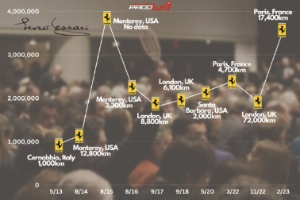
LaFerrari
Much like the Enzo, LaFerrari's name - literally translated to The Ferrari - promised a lot and it certainly lived up to that. As part of the hypercar holy trinity, LaFerrari's reputation precedes it, a combination of Formula 1-derived aerodynamics and a KERS-assisted 950hp engine made this car the most potent Ferrari had built up to that point. Despite this reputation, values remain stable for LaFerrari. This could be attributed to the fact that less time has elapsed since production than its contemporaries.
As was the case with the Enzo, there is one prominent exception to LaFerrari's relatively steady market value which was a car sold to raise money for charity (5,541,963 in total) in the wake of the earthquake that hit central Italy in 2016. An initial investment of £2,145,462 in August 2019 and a sale price of £3,300,302 at the beginning of 2023 yields a 53 per cent ROI, still nothing to sniff at but not a huge amount compared to the other big five cars. That figure is sure to rise with the passing of time, however, especially with the next Ferrari hypercar on the horizon.
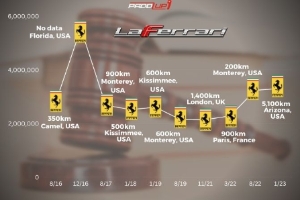
As is the case with all of our investment pieces, there may be factors at play that we haven't accounted for with each individual car auction. Likewise, there are always external costs to consider such as running costs, maintenance and storage. We are looking at the market in very broad terms for an overview of what performs well and what doesn't.